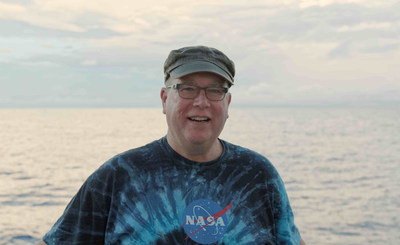ALAMEDA, California, Oct. 21, 2019 /PRNewswire/ -- Saildrone Inc, a provider of high-resolution ocean data collected from a fleet of unmanned surface vehicles, announced today that Eric Lindstrom will join Saildrone as Chief Scientist on December 2, 2019. Dr. Lindstrom is retiring from NASA at the end of November 2019, after serving as a Physical Oceanography Program Scientist over the past 22 years.

"Dr. Lindstrom has spent his entire career developing and quantifying ocean observing technologies. There is no one on this planet more qualified to spearhead the new Saildrone Ocean Observing network," said Richard Jenkins, Saildrone's CEO, "We are thrilled to add his experience and perspective to our team."
As Chief Scientist, Dr. Lindstrom will oversee Saildrone's science efforts, including observing system design, instrument selection, data quality, and sensor validation. Saildrone plans to deploy a further 50 Saildrone vehicles during 2020, in a coordinated research effort to quantify and understand some of the biggest challenges facing our oceans, and ultimately, our planet.
"Our vast oceans play a key role in regulating climate, providing avenues for world trade, and providing a major source of protein for billions of people. The need for in-situ and remote sensing of the ocean has never been greater. Forecasting of weather, climate, and ocean circulation and managing key fisheries require reliable and continuing sources of high quality data," said Dr. Lindstrom.
He continued, "Saildrone is the best solution for many in-situ observing requirements. The global reach of the Saildrone fleet and its ability to collect high quality data on air-sea interaction, gas transfer, biodiversity, and seafloor topography is unprecedented. I am happy to commit the rest of my career in oceanography to growing this critical capability and implement a new ocean observing system for the next century."
ABOUT SAILDRONE
Saildrone Inc. is a provider of high-resolution oceanographic and atmospheric data, collected by its fleet of wind and solar-powered unmanned surface vehicles, known as Saildrones. Each vehicle can stay at sea for up to 12 months, transmitting real-time data via Satellite, before returning to shore for servicing and sensor calibration. Saildrone currently has a fleet of 100 vehicles, and can undertake year round operations in almost all oceans on the planet, ice allowing. Using clean renewable wind and solar power, Saildrones provide access to the world's oceans at a fraction of the cost of traditional ship-based methods, while operating with a zero carbon footprint.
Photo - https://mma.prnewswire.com/media/1013734/Dr_Eric_Lindstrom.jpg